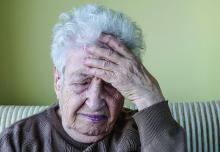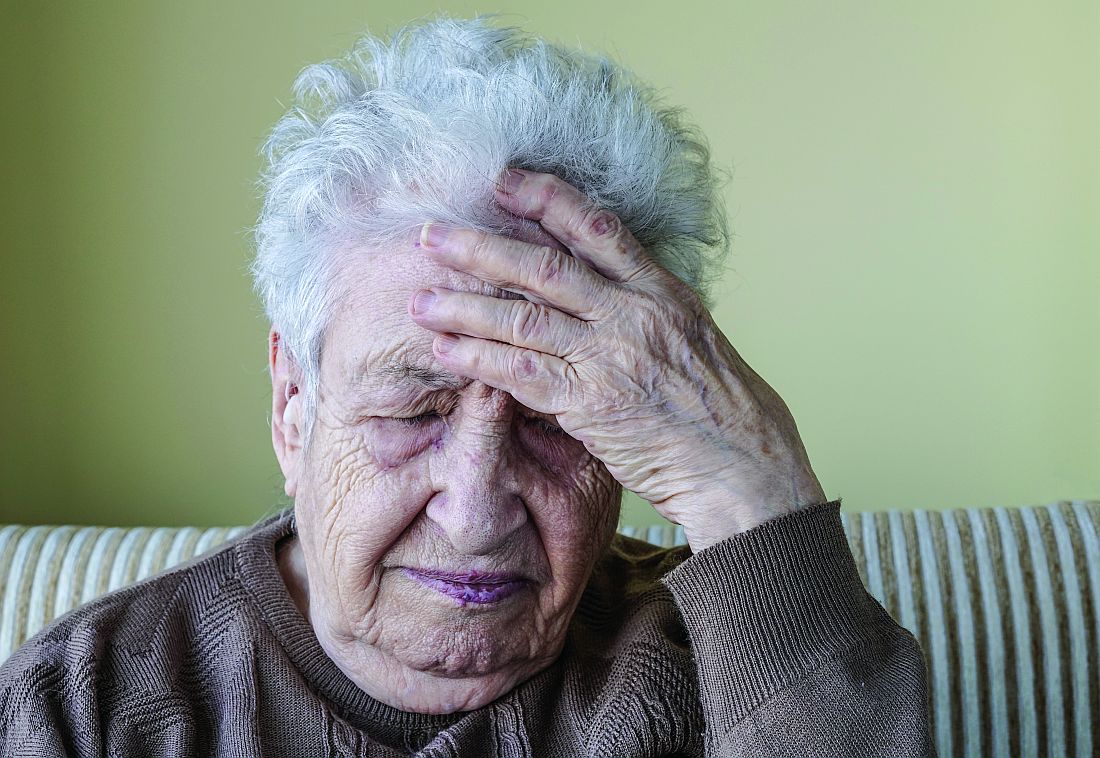User login
, a study of 1,965 community-dwelling participants aged 65 years and older suggests.
The results hold “even after adjusting for various confounding variables such as depression,” reported Raffaella Calati, PhD, of Inserm U1061 – Hôpital La Colombière in Montpellier, France, and her associates.
The participants were screened at a neurology hospital. A special questionnaire was developed to assess nonmigrainous and migraine headache. In addition, the participants were examined using the Mini-International Neuropsychiatry Interview, which can be used to identify suicidal ideation, suicide attempts, and Axis I psychiatric disorders.
The association between lifetime suicidal attempts and headache proved significant (odds ratio, 1.92; 95% confidence interval, 1.17-3.15). Of the 17% of people who reported migraine, 29% of them reported lifetime suicide attempts, and, of the 10% of people who reported nonmigrainous headaches, 17% reported lifetime suicide attempts. Subjects who reported lifetime suicide attempts shared several characteristics (Eur Psychiatry. 2017;41:132-9).
“The main finding in this cohort of elderly subjects from the general population was the association between lifetime [suicide attempts] and lifetime headache,” Dr. Calati and her associates wrote. “Interestingly, the association remained significant when controlling for other variables such as gender, living alone, tobacco and alcohol consumption, and depressive/manic, hypomanic, and anxiety disorders.”
The findings could lead to early detection of patients at risk of suicide attempts and help guide the choice of treatment, they said. “In headache subjects the use of drugs associated with a suicidal risk warning, such as antiepileptic drugs (used in headache), should be carefully monitored with closer follow-ups evaluating suicidal risk.”
, a study of 1,965 community-dwelling participants aged 65 years and older suggests.
The results hold “even after adjusting for various confounding variables such as depression,” reported Raffaella Calati, PhD, of Inserm U1061 – Hôpital La Colombière in Montpellier, France, and her associates.
The participants were screened at a neurology hospital. A special questionnaire was developed to assess nonmigrainous and migraine headache. In addition, the participants were examined using the Mini-International Neuropsychiatry Interview, which can be used to identify suicidal ideation, suicide attempts, and Axis I psychiatric disorders.
The association between lifetime suicidal attempts and headache proved significant (odds ratio, 1.92; 95% confidence interval, 1.17-3.15). Of the 17% of people who reported migraine, 29% of them reported lifetime suicide attempts, and, of the 10% of people who reported nonmigrainous headaches, 17% reported lifetime suicide attempts. Subjects who reported lifetime suicide attempts shared several characteristics (Eur Psychiatry. 2017;41:132-9).
“The main finding in this cohort of elderly subjects from the general population was the association between lifetime [suicide attempts] and lifetime headache,” Dr. Calati and her associates wrote. “Interestingly, the association remained significant when controlling for other variables such as gender, living alone, tobacco and alcohol consumption, and depressive/manic, hypomanic, and anxiety disorders.”
The findings could lead to early detection of patients at risk of suicide attempts and help guide the choice of treatment, they said. “In headache subjects the use of drugs associated with a suicidal risk warning, such as antiepileptic drugs (used in headache), should be carefully monitored with closer follow-ups evaluating suicidal risk.”
, a study of 1,965 community-dwelling participants aged 65 years and older suggests.
The results hold “even after adjusting for various confounding variables such as depression,” reported Raffaella Calati, PhD, of Inserm U1061 – Hôpital La Colombière in Montpellier, France, and her associates.
The participants were screened at a neurology hospital. A special questionnaire was developed to assess nonmigrainous and migraine headache. In addition, the participants were examined using the Mini-International Neuropsychiatry Interview, which can be used to identify suicidal ideation, suicide attempts, and Axis I psychiatric disorders.
The association between lifetime suicidal attempts and headache proved significant (odds ratio, 1.92; 95% confidence interval, 1.17-3.15). Of the 17% of people who reported migraine, 29% of them reported lifetime suicide attempts, and, of the 10% of people who reported nonmigrainous headaches, 17% reported lifetime suicide attempts. Subjects who reported lifetime suicide attempts shared several characteristics (Eur Psychiatry. 2017;41:132-9).
“The main finding in this cohort of elderly subjects from the general population was the association between lifetime [suicide attempts] and lifetime headache,” Dr. Calati and her associates wrote. “Interestingly, the association remained significant when controlling for other variables such as gender, living alone, tobacco and alcohol consumption, and depressive/manic, hypomanic, and anxiety disorders.”
The findings could lead to early detection of patients at risk of suicide attempts and help guide the choice of treatment, they said. “In headache subjects the use of drugs associated with a suicidal risk warning, such as antiepileptic drugs (used in headache), should be carefully monitored with closer follow-ups evaluating suicidal risk.”
FROM EUROPEAN PSYCHIATRY

